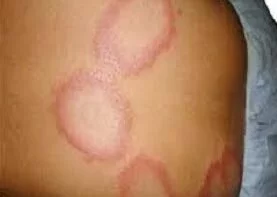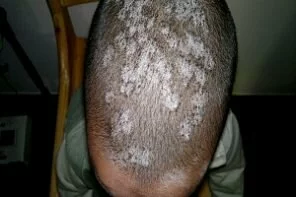Questions and answers on “Craw-Craw” (Scabies)
In the dirty and over-crowded areas of the cities and in many parts of the rural areas of Africa, the sight of children with “Craw-Craw” rashes is still quite common. The process of scratching by the infested person transfers the mites to other parts of the body.
The period between the time of infestation and the appearance of rashes or the onset of itching is called the incubation period. This may be between two or six weeks in persons without previous exposure or one to four days in cases of re-infestation
Scabies responds very well to appropriate treatment which is the application of an emulsion called benzyl benzoate. This must be applied all over the body from the neck to the sole of the feet after a bath. It is usually necessary to apply the emulsion a second time about seven to ten days after the first application. All close contacts must also be treated and where itching is persistent, drugs like piriton or other anti-histamine may be used to control it. After treatment, a cleansing bath is taken and a change made to fresh clothing and bed clothes. However, treatment is not complete without taking proper care of the clothing and bed linens of the infested person. All these have to be thoroughly washed and sun-dried to kill off the mites therein.
1. What is scabies?
Scabies is an itchy skin disease appearing as little blisters or/and sores in certain parts of the body. It affects all ages but mostly children.
It is found in between the fingers, inner surface of the wrist, the waistline, navel, the genitals (penis in men and labia in women) and the sides of the breast in women.
The severe itching of scabies due to allergy to the mites which cause it, gives it away.
2. What causes scabies?
“Craw-Craw” or scabies is caused by the infestation of the skin by a mite Called “sarcoptes scabei” in man. Other species of these mites infest domestic animals like cat and dogs and may temporarily infest man. The female mite burrows throw the outer layers of the skin at the rate of two to three mm per day and lays about three eggs everyday of her four to five weeks lifespan. The eggs hatch after three or four days and the male and female young mites take about 10days to mature. At about the tenth day or so, they copulate and immediately after, the male dies, while the female continues the business continues the business of laying eggs and hatching new mites.
3. Who is affected?
Scabies is predominantly a childhood phenomenon but it is by no means limited to children. Both female and male are equally affected but there may be a slight variation in the distribution of the rashes which however is due mainly to differences in individual habits.
4. How does it spread?
Transmission is by direct close contact with an infested individual but in some cases there might be transfer of parasites from undergarments, soiled bed clothes and other garments freshly contaminated by infested persons. Scabies may also be transmitted among adults during sexual contact; and in such cases, the rashes are found on the genitals the penis and the scrotum in the male and labia in the female.
There is usually a rapid transmission among children the children of nursery and primary schools and epidemics have occurred during periods of war and economic crisis, in prisons, in army barracks or in any situation that favors overcrowding. Children who get infested at school may transmit the infestation of their peer groups at home and even their parents.
5. What are the symptoms and signs?
The rashes of scabies appear as small eruptions in the spaces between the fingers and on the back of the hand. The rashes are very itchy due to burrowing activities of the female mites and the itching is more intense at night when the body warmth and the relative inactivity of the host, enhance the activities of the mites. Rashes are also found around the elbows, the buttocks, groins, and the scrotum and around the axillae.
6. What are the possible complications?
The rashes frequently get infected and become “weepy” due to the watery discharges from their scratched surfaces. Where the infection is by a type of bacteria called “streptococcus pyogenase”, it can lead to an acute Glomerulo-nephritis”, an infection of the kidneys. This is however not common.
7. How can I prevent it?
Scabies is essentially a disease of people with dirty habits and living in crowded apartments. Average hygienic measures should be carried out to keep scabies away but when any member of the household, especially the school children is infested, it is necessary to trace the contact to the school and ensure that he is also treated. Where several members of a hostel or barrack are infested, treatment should be taken on a co-ordinate mass basis and all linens, undergarments and clothing of the resident should be sun-dried for at least three days consecutively.
Children should be trained to develop the habit of washing their hands with soap and water whenever they return from playing grounds and their underwear should be changed every day. However, because scabies rashes resemble some other types of skin conditions especially in the early stages, it is necessary to see the Doctor for a proper diagnosis.




